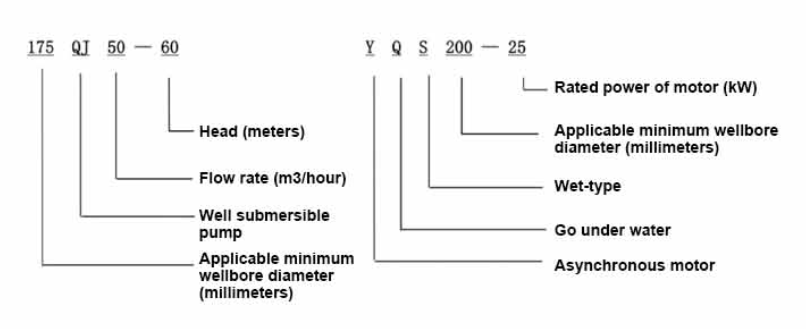Aug . 12, 2024 13:06 Back to list
Common Issues Faced by Deep Well Submersible Pumps and Their Solutions for Efficient Operation
Common Problems with Deep Well Submersible Pumps
Deep well submersible pumps are a crucial component in water extraction from underground aquifers. These pumps, designed to function underwater, are characterized by their efficiency and ability to operate at significant depths. However, like any mechanical system, they can encounter a variety of problems that can impact their performance. Understanding these issues can help in early detection and maintenance, ensuring the longevity and reliability of the pump system.
1. Electrical Failures
One of the most common issues faced by deep well submersible pumps is electrical failure. This can arise from various sources, including power surges, inadequate voltage supply, or malfunctioning control panels. Electrical issues can lead to pump overload, overheating, and ultimately, motor failure. It is essential to ensure that the electrical supply is stable and monitored regularly, including the use of surge protectors and appropriate fuses.
2. Mechanical Wear and Tear
Over time, the components of a submersible pump can suffer from mechanical wear and tear. This includes impellers, bearings, and seals. Sand, silt, and debris present in the water can accelerate this wear process. Regular inspections and maintenance can help identify early signs of wear. Additionally, using filters can minimize the amount of debris entering the pump, thereby extending its operational life.
3. Cavitation
Cavitation occurs when there is a significant drop in pressure on the suction side of the pump, leading to the formation of vapor bubbles. These bubbles can collapse violently when they reach areas of higher pressure within the pump, causing noise, vibration, and potentially damaging the impellers. To prevent cavitation, it is crucial to ensure proper sizing of the pump, adequate water level in the well, and maintain proper operating conditions.
deep well submersible pump problems

4. Overheating
Overheating is another critical problem that can affect a deep well submersible pump. This condition is often related to running the pump at too high a flow rate or for prolonged periods without rest. Insufficient cooling and lack of proper lubrication can exacerbate the issue. To mitigate overheating, it's vital to adhere to the manufacturer’s guidelines regarding flow rates and operating times. Installing temperature monitoring devices can also provide early warnings of potential overheating issues.
5. Corrosion
Deep well pumps are often constructed from materials that can withstand harsh conditions, but even the best materials can fall victim to corrosion, especially in saltwater or chemically aggressive environments. Corrosion can undermine the structural integrity of the pump, leading to leaks and failures. Regular maintenance and the use of corrosion-resistant materials can help minimize this risk.
6. Submergence Issues
Sometimes, pumps may not be adequately submerged due to falling water levels in the well. If a pump runs dry, it can cause significant damage, including motor burnout. It is, therefore, essential to regularly monitor water levels and consider installing automatic shut-off devices that can turn off the pump when water levels drop below a certain point.
Conclusion
Deep well submersible pumps are invaluable in providing water from significant depths, yet they are not immune to problems. By being aware of potential issues such as electrical failures, mechanical wear, cavitation, overheating, corrosion, and submergence challenges, operators can take proactive measures to ensure their pumps function efficiently. Regular maintenance, monitoring, and adherence to operational guidelines are key to maximizing the lifespan of these essential devices. With proper care, deep well submersible pumps can continue to provide reliable service for years to come.
-
Submersible Water Pump: The Efficient 'Power Pioneer' of the Underwater World
NewsJul.01,2025
-
Submersible Pond Pump: The Hidden Guardian of Water Landscape Ecology
NewsJul.01,2025
-
Stainless Well Pump: A Reliable and Durable Pumping Main Force
NewsJul.01,2025
-
Stainless Steel Submersible Pump: An Efficient and Versatile Tool for Underwater Operations
NewsJul.01,2025
-
Deep Well Submersible Pump: An Efficient 'Sucker' of Groundwater Sources
NewsJul.01,2025
-
Deep Water Well Pump: An Efficient 'Sucker' of Groundwater Sources
NewsJul.01,2025
-
 Submersible Water Pump: The Efficient 'Power Pioneer' of the Underwater WorldIn the field of hydraulic equipment, the Submersible Water Pump has become the core equipment for underwater operations and water resource transportation due to its unique design and excellent performance.Detail
Submersible Water Pump: The Efficient 'Power Pioneer' of the Underwater WorldIn the field of hydraulic equipment, the Submersible Water Pump has become the core equipment for underwater operations and water resource transportation due to its unique design and excellent performance.Detail -
 Submersible Pond Pump: The Hidden Guardian of Water Landscape EcologyIn courtyard landscapes, ecological ponds, and even small-scale water conservancy projects, there is a silent yet indispensable equipment - the Submersible Pond Pump.Detail
Submersible Pond Pump: The Hidden Guardian of Water Landscape EcologyIn courtyard landscapes, ecological ponds, and even small-scale water conservancy projects, there is a silent yet indispensable equipment - the Submersible Pond Pump.Detail -
 Stainless Well Pump: A Reliable and Durable Pumping Main ForceIn the field of water resource transportation, Stainless Well Pump has become the core equipment for various pumping scenarios with its excellent performance and reliable quality.Detail
Stainless Well Pump: A Reliable and Durable Pumping Main ForceIn the field of water resource transportation, Stainless Well Pump has become the core equipment for various pumping scenarios with its excellent performance and reliable quality.Detail
